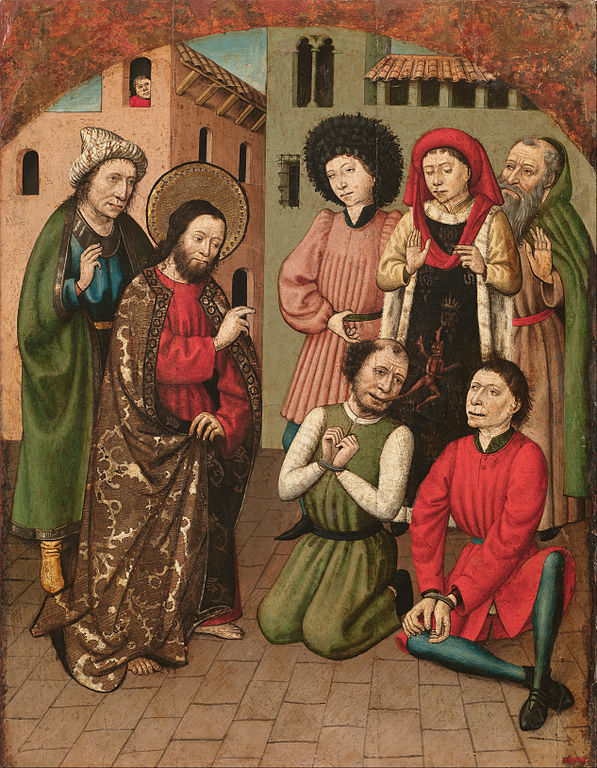I spent the weekend with my grandchildren, who are both perfectly lovely but of distinct and different temperaments. I once painted my grandson. Time got away from me before I could ever paint his sister.
Whenever I spend a lot of time with them, I come back to a conundrum of pop art history: why are babies so misshapen in Byzantine and Renaissance art?
There are several academic explanations for this. The first is that naturalism wasn’t the primary goal of these paintings. Thus the Christ child was never shown crying or having his terribly stinky diaper changed. We like to assume that’s because he was the object of veneration, but we moderns wouldn’t paint babies in those situations either.

“Madonna of Chancellor Rolin,” Jan van Eyck, c. 1435. The infant Jesus is the world’s great high priest in this painting, as indicated by his pose and the landscape.
But we do impute childlike qualities to children, whereas the pre-modern mind was more inclined to see them as little adults-in-training. In Renaissance and Byzantine art, the infant Christ was a representation of his Incarnation—baby, but also always God. Thus he and his mother must foreshadow his agonizing fate, or depict some other characteristic of God Incarnate.
Personally, I think the answer is mainly a practical one. First, the paintings weren’t intended to be viewed up close; they were meant to be seen at a distance, above an altar, in uneven lighting. That meant heavy modeling was important, and that isn’t compatible with the beautiful delicacy of babies.
Real babies make terrible models. As they approach toddlerhood they tolerate sitting only for limited time. They squirm, they wriggle, and they will do anything to get down and play. They are not miniature adults. Their proportions are different and difficult to capture. Their heads are enormous, their eyes widely spaced, and their noses flattened. They have loose folds of fat dangling here and there. Try getting that down on paper while your model is screaming to get loose. I suppose the artists could have drugged the little nippers, but I doubt many mothers would go along with that.
Ever take a baby to a studio for a photo shoot? If so, you know you can’t always get a baby to smile for the camera, and if you ask a toddler to smile, you’re likely to get something very artificial. Imagine, then, trying to project a look of complex calm and suffering onto a baby face, especially when you only have minutes to work before the baby falls asleep, soils himself, or is hungry and bored. Changing the expression on a model’s face is one of the most difficult things one can do, even with all the time in the world.
My grandson is not the only baby portrait I’ve painted, but I’ve never painted a young child from life. No modern would ever try it without reference photos, me included. Kudos to those early painters who did.








.jpg)


.jpg!Large.jpg)

